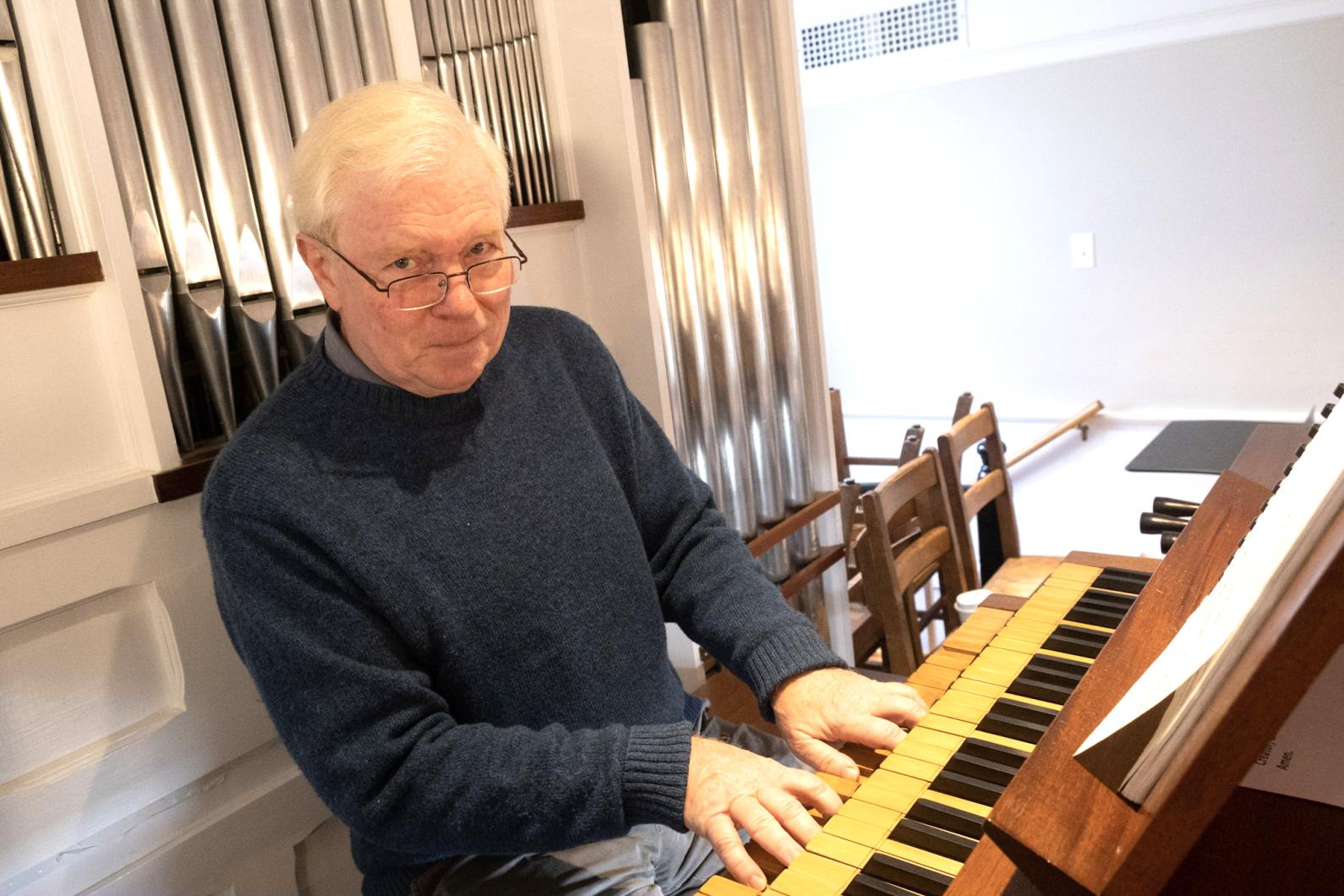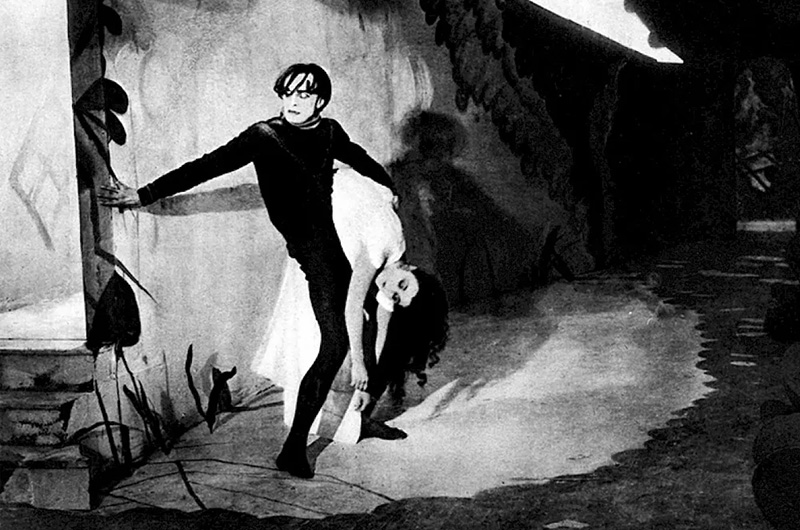The upcoming screening of silent movie classic The Cabinet of Doctor Caligari takes place Sunday night at the First Congregational Church in West Tisbury and features a live organ soundtrack by the church’s music minister, Bill Peek.
“I’m trying to do it basically the way it was done back in the silent era,” said Mr. Peek, during a break from practicing in the organ loft earlier this week.
An open laptop, with the film on pause, sat atop the organ console and sets of sheet music were neatly lined up nearby, each representing a separate part of the live score.
Circuit Arts, which is screening the movie at the church on Oct. 30, asked Mr. Peek less than a month ago if he would play along from his usual station in the organ loft. It will be a first for the organist, who decided to step out of his comfort zone to tackle the movie score.
“Someone who did this a lot would have a repertoire,” he said. “I have had to create my own repertoire in a matter of a couple of weeks.”
Film composers published reams of “photoplay” music, he said, with motifs to fit the various types of scenes in most movies, such as Mysterioso, for suspense; Hurry, for hasty action; and Agitato, for scarier moments. A silent-movie audience 100 years ago would likely hear the accompanist play a mixture of photoplay, classical and popular music, with a bit of original improvisation in between.
Mr. Peek has something similar in store for Sunday’s show. He’ll do some improvising of his own and also play some period photoplay pieces he has unearthed, which should fit right in with the Beethoven, Mendelssohn and Schumann works he’s incorporating into the score.
“Early 20th-century music was influenced by German composers and this a German film,” he said, adding that his goal is to make the score as representative as possible of what a 1920s audience would hear while watching the movie.
The many sound effects of a traditional theatre organ — “I think that’s where the term ‘bells and whistles’ originally came from,” Mr. Peek said — won’t be available, however.
The organ at the First Congregational Church of West Tisbury is a baroque-style Noack built in the 1960s, and about as far from a movie-house type as it’s possible to get and still be an organ, Mr. Peek said.
Bells and whistles would only be a distraction in The Cabinet of Dr. Caligari. Filmed in 1920 Germany, amid the disillusionment and shortages that followed World War I, it’s a dark thriller with painted sets that depict a tilted, distorted world. The characters are freaky as well, with stylized makeup and gestures that echo the German Expressionist set design.
The story itself is suspenseful enough to rank as a precursor to later 20th-century horror classics such as John Carpenter’s Halloween, with its killer’s blank mask hiding an unknowable mind.
While church may seem an incongruous setting for the pre-Halloween screening of a film named for its evil mastermind, there’s no Satanic element to The Cabinet of Dr. Caligari. As the great war had just proved in 1914-1919, humanity needs no supernatural assistance to rain hell on the world.
For tickets and more information, visit tmvff.org.









Comments
Comment policy »